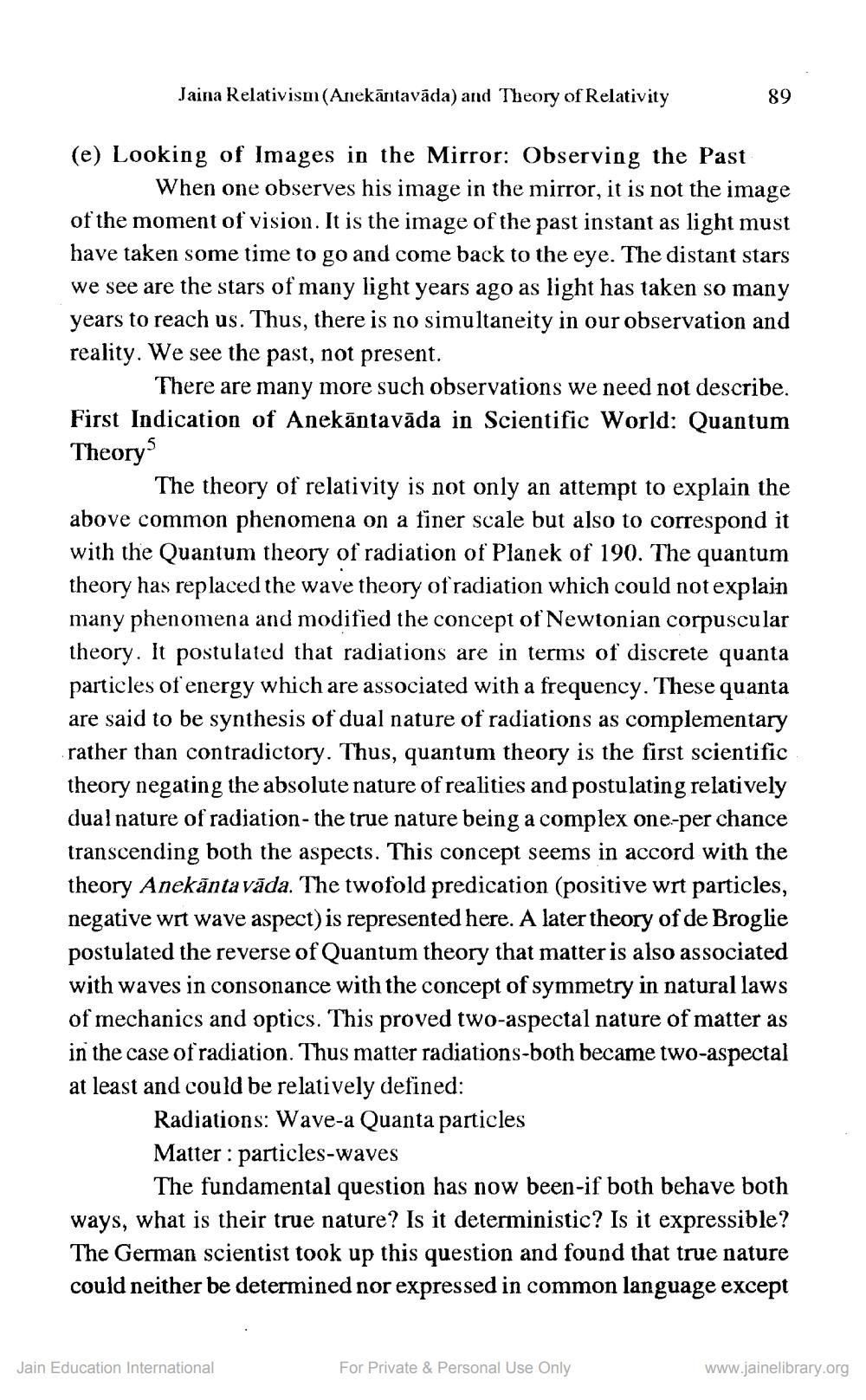________________
Jaina Relativism (Anekāntavāda) and Theory of Relativity
89
(e) Looking of Images in the Mirror: Observing the Past
When one observes his image in the mirror, it is not the image of the moment of vision. It is the image of the past instant as light must have taken some time to go and come back to the eye. The distant stars we see are the stars of many light years ago as light has taken so many years to reach us. Thus, there is no simultaneity in our observation and reality. We see the past, not present.
There are many more such observations we need not describe. First Indication of Anekāntavāda in Scientific World: Quantum Theory
The theory of relativity is not only an attempt to explain the above common phenomena on a finer scale but also to correspond it with the Quantum theory of radiation of Planek of 190. The quantum theory has replaced the wave theory of radiation which could not explain many phenomena and modified the concept of Newtonian corpuscular theory. It postulated that radiations are in terms of discrete quanta particles of energy which are associated with a frequency. These quanta are said to be synthesis of dual nature of radiations as complementary rather than contradictory. Thus, quantum theory is the first scientific theory negating the absolute nature of realities and postulating relatively dual nature of radiation-the true nature being a complex one-per chance transcending both the aspects. This concept seems in accord with the theory Anekānta vāda. The twofold predication (positive wrt particles, negative wrt wave aspect) is represented here. A later theory of de Broglie postulated the reverse of Quantum theory that matter is also associated with waves in consonance with the concept of symmetry in natural laws of mechanics and optics. This proved two-aspectal nature of matter as in the case of radiation. Thus matter radiations-both became two-aspectal at least and could be relatively defined:
Radiations: Wave-a Quanta particles Matter : particles-waves
The fundamental question has now been-if both behave both ways, what is their true nature? Is it deterministic? Is it expressible? The German scientist took up this question and found that true nature could neither be determined nor expressed in common language except
Jain Education International
For Private & Personal Use Only
www.jainelibrary.org




